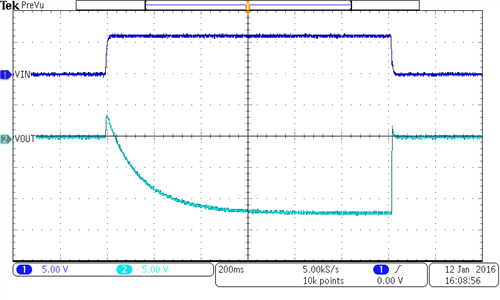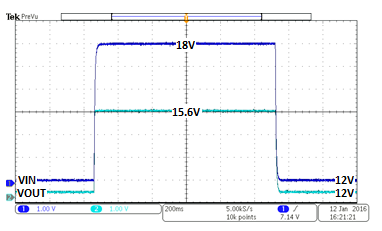SSZTBB8 May 2016 TPS25924 , TPS25940
Much like when Dorothy arrived in Oz, your first look at the multitude of features inside the Texas Instruments eFuse portfolio can be overwhelming. With options such as voltage clamping, circuit breaking and auto retry (to name a few), our portfolio can help protect almost every power circuit.
But with so many choices, picking the perfect eFuse can pose a challenge. The goal of this three-part blog series is to simplify your eFuse selection process by removing the confusion surrounding the options for overvoltage (part 1), overcurrent (part 2) and fault response (part 3).
We’re off to See the Wizard Down the Yellow Brick Road of Circuit Design.
As you begin your journey down the Yellow Brick Road, you come to the first fork: overvoltage protection (OVP). Figure 1 shows two options: output-voltage clamping and output-voltage cutoff. Before deciding which path to go down, let’s take a look at the benefits of each, starting with the simpler and more common of the two options: output-voltage cutoff.
The Benefits of Output-voltage Cutoff
An eFuse with output-voltage cutoff will generally have an OVP pin where an external resistor can set the trip point. As an example, let’s set the trip point to 15V. During normal operation, a 12V rail will not trip the comparator, and the internal FETs will remain closed; the device will stay on. However, a transient of 18V will exceed the trip point and the internal FETs will open, turning the device off. Figure 1 shows this operation.
 Figure 1 eFuse Output-voltage Cutoff Example Using the TPS25940
Figure 1 eFuse Output-voltage Cutoff Example Using the TPS25940Once the input voltage (VIN) exceeds 15V, the eFuse turns off and the output voltage (VOUT) falls to 0V, as shown in Figure 1. The eFuse will remain off as long as the input voltage exceeds the set overvoltage trip point. Once the input voltage returns to 12V, the device turns back on and VOUT once again returns to 12V. Because output-voltage cutoff disables the eFuse when active, it will never trigger a thermal shutdown.
While this is the most common form of overvoltage protection in the Texas Instruments eFuse portfolio, it may not always be the best. Sometimes it is beneficial to keep a voltage rail alive for as long as possible by clamping the output voltage to the nominal voltage.
The Benefits of Output-voltage Clamping
Contrary to output-voltage cutoff, during output-voltage clamping the eFuse remains operational. When the input voltage exceeds the hard-coded trip point, the internal clamp will activate and limit the output voltage. As shown in Figure 2, the TPS25924 eFuse integrates a 15V output clamp.
 Figure 2 eFuse Output-voltage Clamping Using the TPS25924
Figure 2 eFuse Output-voltage Clamping Using the TPS25924You can see in Figure 2 that when the input voltage spikes from 12V up to 18V, the clamping circuitry activates and ensures that the eFuse only outputs 15.6V (typically 15V). If the transient on the input is only temporary, this can allow the eFuse to “hide” the fault from downstream circuitry. If the fault lasts long enough to activate the eFuse’s thermal shutdown (typically TJ = 150°C), then the fault will still cause the eFuse to turn off (similar to output-voltage cutoff). After thermal shutdown, all eFuses then enter one of two fault-response modes: either latch off or auto retry, both of which I will cover in the third part of this series.
But first, stay tuned for part 2, which will delve into overcurrent event-response options: current limiting and circuit breaking.
Additional Resources
- Read part 2 and part 3 of this series.
- Read the blog post, “Get out of the dark: Upgrade your fuse!”
- Check out these reference designs: